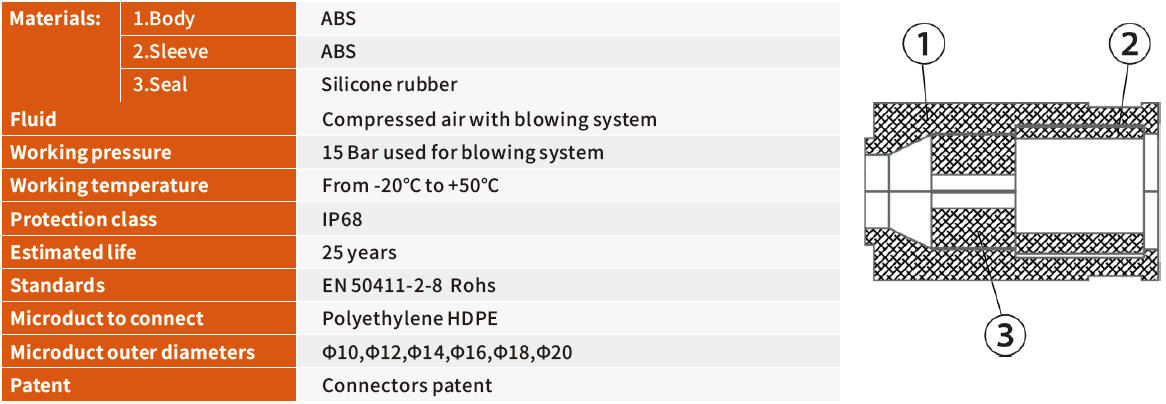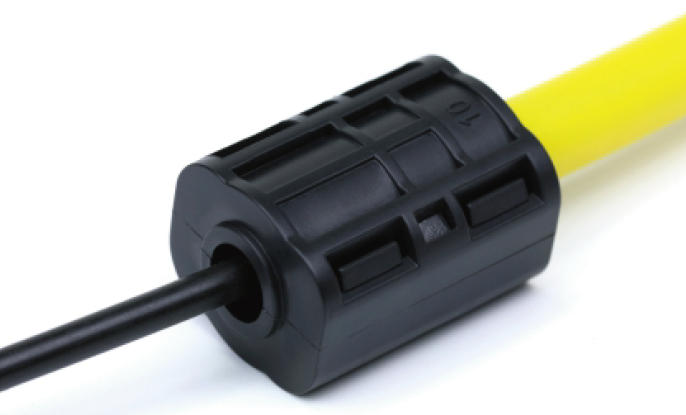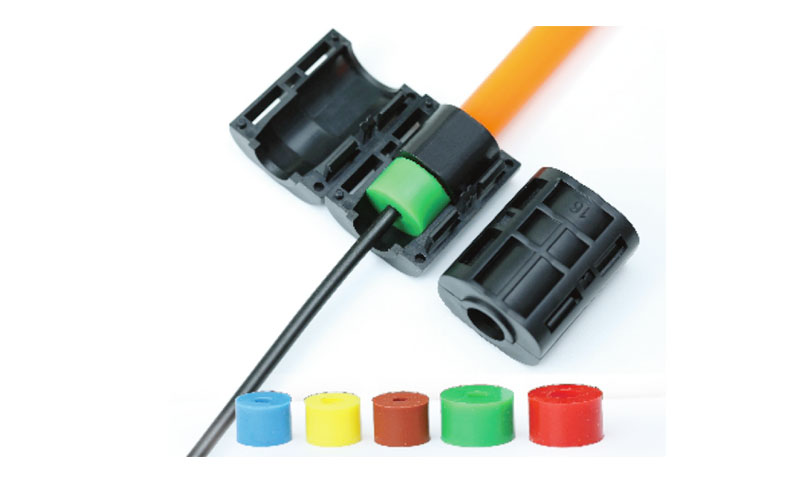✅ Size Compatibility: Available for microduct outer diameters (OD) ranging from 4mm to 63mm, with cable accommodation ranges typically between 0.9mm to 16mm.
✅ Pressure Ratings:
✅ Sealing Pressure: Typically seals against external pressures up to 0.25–0.5 bar.
✅ Blowing Pressure: Some models withstand up to 16 bar for cable installation.
✅ Temperature Range: Operates effectively in temperatures from -10°C to +60°C.

✅ Tool-Free Installation: Many models feature a divisible or push-fit design for quick, tool-free installation, reducing labor time and costs.
✅ Retro-Fit Capability: Designed to be installed after fiber or cable blowing, making them ideal for both new and existing installations.
✅ Compact Design: Allows installation in confined or difficult-to-access spaces.
✅ Material Composition: Typically constructed from polycarbonate (PC) or nylon (PA) for the body, with seals made of TPE (Thermoplastic Elastomer), NBR (Nitrile Rubber), or EPDM for superior elasticity and chemical resistance.
✅ Color-Coded Inner Seals: Facilitate quick identification of cable sizes, streamlining the installation process.
✅ Miniaturization: Development of compact designs for high-density applications in ODFs or limited-space environments.
✅ Enhanced Materials: Growing use of advanced polymers and composites for improved durability and chemical resistance.
✅ Integration with Smart Networks: As FTTH expands, divisible seals are becoming critical for ensuring reliability in smart city infrastructure.
✅ Building Entry Points: Installed at transitions where microducts enter buildings, ODFs (Optical Distribution Frames), or cabinets to prevent gas/water ingress into sensitive indoor environments.
✅ FTTx Networks: Critical for Fiber-to-the-Home (FTTH) and Multi-Dwelling Unit (MDU) deployments, ensuring end-to-end network integrity.
✅ Retrofit and Maintenance: Ideal for sealing existing installations without the need to remove cables, minimizing downtime.
✅ Direct Burial and Underground Ducts: Some models are designed for underground use, though others may require additional protection for direct burial applications.




